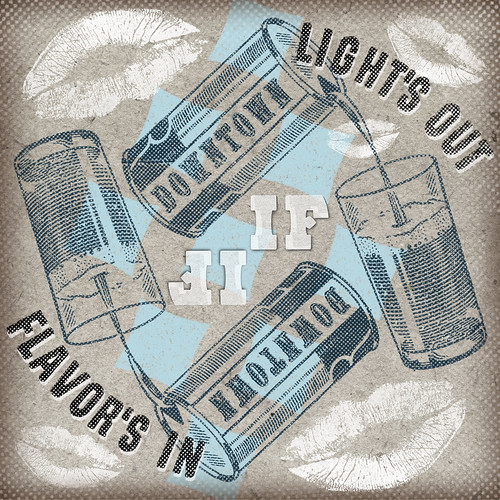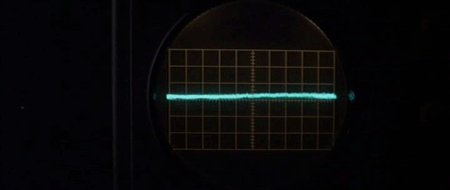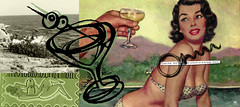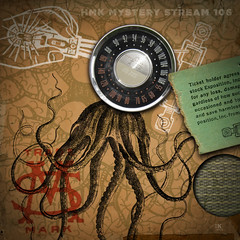FYI: How To Tap A Keg
Above: HMK Mystery Stream: Irregular Frequency Cover Art.
If you're looking for some quality beer drinkin' music - Click Hear: hmk.podomatic.com
This How-To was originally submitted by Wired.com and Condé Nast Traveler contributor Brook Wilkinson.
Step 1: Ice down your brew
One of the most common causes of exuberant foamage is warm beer. The exact ideal temperature depends on the style of beer, but your standard American macrobrew will be "tastiest" around 35 degrees. This means you'll want the beer chilling at least two hours ahead of time, and ideally four to five.
The genius who designed your typical keg bucket made it only about half as tall as a standard keg. To ensure that the entire surface area of the keg is cooled -- not just the bottom half -- place a plastic garbage bag in the bucket, then put down a thin layer of ice before dropping in the keg itself. Continue to pack ice inside the garbage bag, all the way to the top of the keg. Check periodically and add ice as needed.
Step 2: Prep your gear
It's just as important to cool down the tap as it is to cool down the keg itself. The amount of carbonation the beer can hold goes down as temperature increases, so letting cold beer hit a warm tube guarantees an avalanche of foam. Fortunately, the solution is pretty easy: just leave the tap on top of the ice around the keg at least an hour or so before you decide to tap.
Before you put tap to keg, make sure that the party tap (the spigot where the beer comes out) is in the closed position. Most taps have a handle that pushes down to lock the tap onto the keg. Others have two flanges that you twist about a quarter-turn. In either case, make sure that the handle or flanges are not in the engaged position. If they are, beer will spray out as soon as you place the tap on the keg.
Step 3: Tap that sucker
Seat the party pump on top of the keg, making sure not to push down on the spring-loaded ball valve (another way to spray beer in your face). Lock the pump onto the keg by rotating it clockwise, then engage the tap by pulling the handle out, then pushing it down, or twisting the flanges. If you see bubbles or foam forming around the tap, something's not seated correctly, so disengage the pump, take it off, and try again.
Step 4: Prep your cup
Scratches inside a glass will serve as nucleation sites where beer turns to foam. If your glass is visibly scratched, use an old bartender's trick and rinse it with water, which will coat the craggy spots. If you're using plastic cups, scratches aren't much of an issue.
Step 5: Patience
No matter how carefully you've followed these steps, the first pint out of a keg will always be foamy. Pour it into a spare glass until the beer starts flowing (foam begets foam, so you'll waste more than you'll drink if you try to pour beer into a foamy glass). You don't have to pump before the first pour, since the keg is already under a great deal of pressure.
Step 6: Master the perfect pour
Too fast or slow a pour will create foam. You can regulate the speed by how much you pump. But always push down the party tap all the way; partially opening it won't slow down the pour, it'll just create foam. It should take 10 to 15 seconds to pour a pint with a good finger or two of foam.
For the first few pints (when the keg is still under pressure), hold the tap and glass at arm's length above your head so that the beer comes out at the proper speed. After that, you can adjust by pumping (to increase the speed of beer flow) or holding the glass and tap over your head (to decrease it). Some taps also have a small pressure release valve, which you can open by pulling on the metal ring attached to it.
Since there's no rule of thumb for the proper number of pumps per pint, it's easiest to do this with a friend rather than going it alone: One person holds the glass at a 45-degree angle and points the spigot toward the side of the glass, gradually turning the glass to vertical to avoid spilling. The other gives the keg a few pumps anytime the glass starts to get too foamy. Just don't overdo it: Too many pumps will -- yep, you guessed it -- create foam as well.
This How-To was originally submitted by Wired.com and Condé Nast Traveler contributor Brook Wilkinson.
Step 1: Ice down your brew
One of the most common causes of exuberant foamage is warm beer. The exact ideal temperature depends on the style of beer, but your standard American macrobrew will be "tastiest" around 35 degrees. This means you'll want the beer chilling at least two hours ahead of time, and ideally four to five.
The genius who designed your typical keg bucket made it only about half as tall as a standard keg. To ensure that the entire surface area of the keg is cooled -- not just the bottom half -- place a plastic garbage bag in the bucket, then put down a thin layer of ice before dropping in the keg itself. Continue to pack ice inside the garbage bag, all the way to the top of the keg. Check periodically and add ice as needed.
Step 2: Prep your gear
It's just as important to cool down the tap as it is to cool down the keg itself. The amount of carbonation the beer can hold goes down as temperature increases, so letting cold beer hit a warm tube guarantees an avalanche of foam. Fortunately, the solution is pretty easy: just leave the tap on top of the ice around the keg at least an hour or so before you decide to tap.
Before you put tap to keg, make sure that the party tap (the spigot where the beer comes out) is in the closed position. Most taps have a handle that pushes down to lock the tap onto the keg. Others have two flanges that you twist about a quarter-turn. In either case, make sure that the handle or flanges are not in the engaged position. If they are, beer will spray out as soon as you place the tap on the keg.
Step 3: Tap that sucker
Seat the party pump on top of the keg, making sure not to push down on the spring-loaded ball valve (another way to spray beer in your face). Lock the pump onto the keg by rotating it clockwise, then engage the tap by pulling the handle out, then pushing it down, or twisting the flanges. If you see bubbles or foam forming around the tap, something's not seated correctly, so disengage the pump, take it off, and try again.
Step 4: Prep your cup
Scratches inside a glass will serve as nucleation sites where beer turns to foam. If your glass is visibly scratched, use an old bartender's trick and rinse it with water, which will coat the craggy spots. If you're using plastic cups, scratches aren't much of an issue.
Step 5: Patience
No matter how carefully you've followed these steps, the first pint out of a keg will always be foamy. Pour it into a spare glass until the beer starts flowing (foam begets foam, so you'll waste more than you'll drink if you try to pour beer into a foamy glass). You don't have to pump before the first pour, since the keg is already under a great deal of pressure.
Step 6: Master the perfect pour
Too fast or slow a pour will create foam. You can regulate the speed by how much you pump. But always push down the party tap all the way; partially opening it won't slow down the pour, it'll just create foam. It should take 10 to 15 seconds to pour a pint with a good finger or two of foam.
For the first few pints (when the keg is still under pressure), hold the tap and glass at arm's length above your head so that the beer comes out at the proper speed. After that, you can adjust by pumping (to increase the speed of beer flow) or holding the glass and tap over your head (to decrease it). Some taps also have a small pressure release valve, which you can open by pulling on the metal ring attached to it.
Since there's no rule of thumb for the proper number of pumps per pint, it's easiest to do this with a friend rather than going it alone: One person holds the glass at a 45-degree angle and points the spigot toward the side of the glass, gradually turning the glass to vertical to avoid spilling. The other gives the keg a few pumps anytime the glass starts to get too foamy. Just don't overdo it: Too many pumps will -- yep, you guessed it -- create foam as well.



















